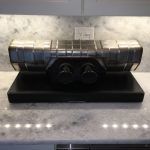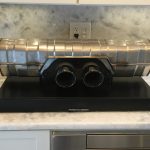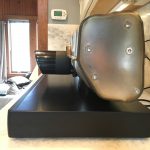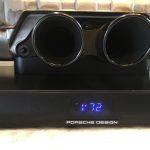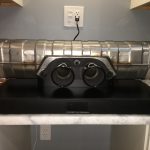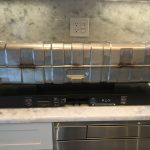My love of Porsche wasn’t at first sight, it was love at first sound! I can clearly remember the day I first heard an air-cooled 911. I was 13 and it was the early 80’s. Porsches were definitely not common in my neighborhood and until that day I’d only seen them on posters and TV. The throaty burble of the flat-six immediately grabbed my attention as it rumbled up behind me. At the time, I didn’t yet know what it was, but I knew I liked it. Then, as it passed, the driver grabbed another gear, and I was hooked. Who couldn’t help but fall in love with those wide hips combined with its siren song? Like it’s finely tuned boxer engine, the sound coming from the 911s muffler was powerful.
Fast forward to today and Porsche’s most recent iteration of the their 911 GT3 is one of their most powerful road going sports cars. Capable of hitting 60 mph in just 3.3 seconds on its way to a top speed of nearly 200 mph the sounds that emanate from its muffler are intoxicatingly powerful. To me, it can tell a story and convey emotion. Packaged properly, as Porsche does, it’s a sound that motivates. The 911 Soundbar Porsche Design sent us to review has these same attributes because it uses the actual components from a GT3. It takes the normal function of a GT3 muffler and turns it upside down to resonate sound vs. constrain and control it. Delivering deep bass and a measurably louder audio experience, the 911 Soundbar pushes out your favorite track at 200 watts with no distortion. That’s powerful!
Here’s how Porsche describes it:
Similar to the Porsche 911 GT3, the muffler plays an essential role in generating sound for the “911 Soundbar”. Here, the highlight is the more-or-less reversed functionality of the original parts: unlike a car, the rear section and tailpipes on the “911 Soundbar” are used as resonators. This channels rearward sound to activate air within the muffler’s “pipe system.” The result is an extremely high-level of efficacy in the corresponding frequencies. In lieu of the air volume, this translates into a sound threshold, which is deeper, higher, and quantitatively louder. Simply put: “more power.”
Porsche 911 Soundbar Technical Specs
Type of Sound: 2.1 Virtula Surround System
System Power: 200 watts
Frequency Response: 35….23.000 Hz
Crossover Frequency: 170 / 2.000 Hz
Woofer: 4 100 mm (4″)
Midrange: 2 x 50 mm (2″)
Tweeter: 2 x 19 mm (1″), Fabric
Connection: 1 analog input, 1 Bluetooth 3.0 interface (apt-X codec), 1 digital input (coaxial), 1 digital input (optical)
Dimensions (l x w x h): 74 x 32 x 28 cm
Weight: 19 kg
Porsche 911 Soundbar Features
- Original 911 GT3 exhaust system as subwoofer enhancement
- Integrated Subwoofer
- Bass and treble control
- Dolby Digital decoder
- DTS TruSurround™
- Remote Control
- HDF cabinet
- LED Display
- Virtual surround sound & stereo playback
- simple one-cable installation
- Easy-Pairing – easiest connection with source device
How it performs in the real world
The 911 Soundbar is as impressive to look at as it is to listen to. The GT3 muffler sits atop a black monolithic like base that holds the electronics and integrated subwoofer. Setup is a breeze. All you do is attach the supplied power-cord, plug it in, and use the remote to choose your input option. For our test we paired our iPhone using Bluetooth. It took less than 15 seconds overall.
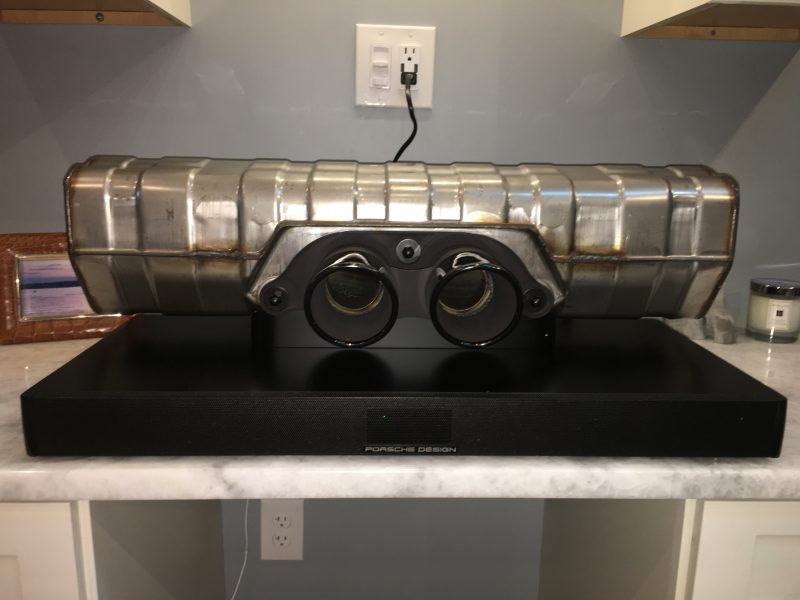
Next we needed to figure out the best way to test the speaker. We wanted a real-world test, not a bunch of prepackaged songs designed specifically to make the speaker sound good. We decided to do some research. Was there any one particular song that audio engineers use that covers a wide range of sounds and styles? After a few minutes spent on google we ended up over on CambridgeAudio.com on a blog post titled, “Test your speakers like a Cambridge Audio Engineer“. What we learned is that there’s no one single track you can use. Instead, you need to pick a wide, dynamic range of songs you like to listen to and see how they sound for your speaker. Here’s a quick rundown of their suggestions:
1. Start with an easy track, one that’s well recorded and produced to such a high standard that it should sound good even through ear buds. We chose “Get Lucky” from Daft Punk.
2. Next up they suggest something with a wider range. You want to find a song where you can hear the separation between the different instruments and individual vocals. We chose Stevie Ray Vaughan’s “Tin Pan Alley”.
3. Moving on, you want your music to move you. It needs to convey the emotion the artist intended. If it’s an upbeat or fun song, does the sound from the speaker make your foot tap? A little “Walk on the Wild Side” by Lou Reed had our foot moving to the melody pretty quickly.
4. Let’s not forget about base. Most soundbars have a separate, powered subwoofer. The Porsche 911 Soundbar’s subwoofer is integrated into its base, but it doesn’t suffer as a result. In fact it excels. Ce Lo Green’s “Bright Lights Bigger City” had the whole house shaking with clean, deep bass and no distortion.
5. Last, but definitely not least, you want to tie it all together. You need a complex song that packs a lot into the track both vocally and musically. Sounds like a job for the Foo Fighters “These Days”.
Listen to our test for yourself
We wanted you to hear the test we ran for ourselves so we decided to video the process. Unfortunately, our iPhone doesn’t do it justice, and a lot of the “aural majesty” we experienced doesn’t come through. Hopefully, however, you’ll get some semblance of what we experienced. For us, the Porsche 911 Soundbar reproduced powerful, clear, crisp sound with deep bass at any volume. In fact, once we finished making our video we cranked a little classical music, opened the doors and waited to see if the neighbors would complain. No one did. In fact, one neighbor asked if we would turn it up. With 200 watts of power, we happily obliged…
The Porsche 911 Soundbar is available exclusively from Porsche Design and is priced at $3500.
*Full Disclosure: Porsche Design is a sponsor of FLATSIXES.com and sent us a sample of the 911 Soundbar to review. Unfortunately, despite our begging, we still had to return it.
